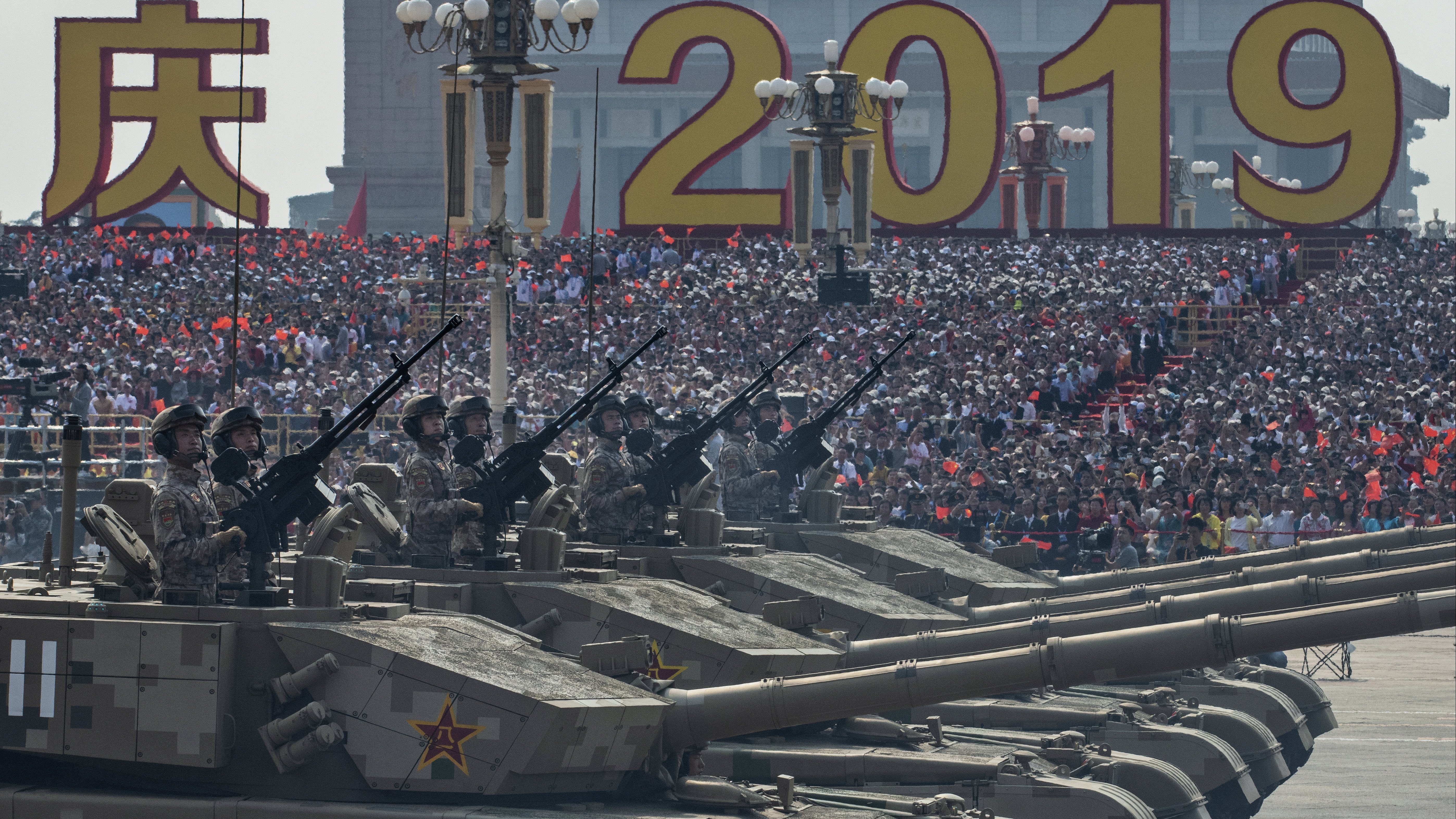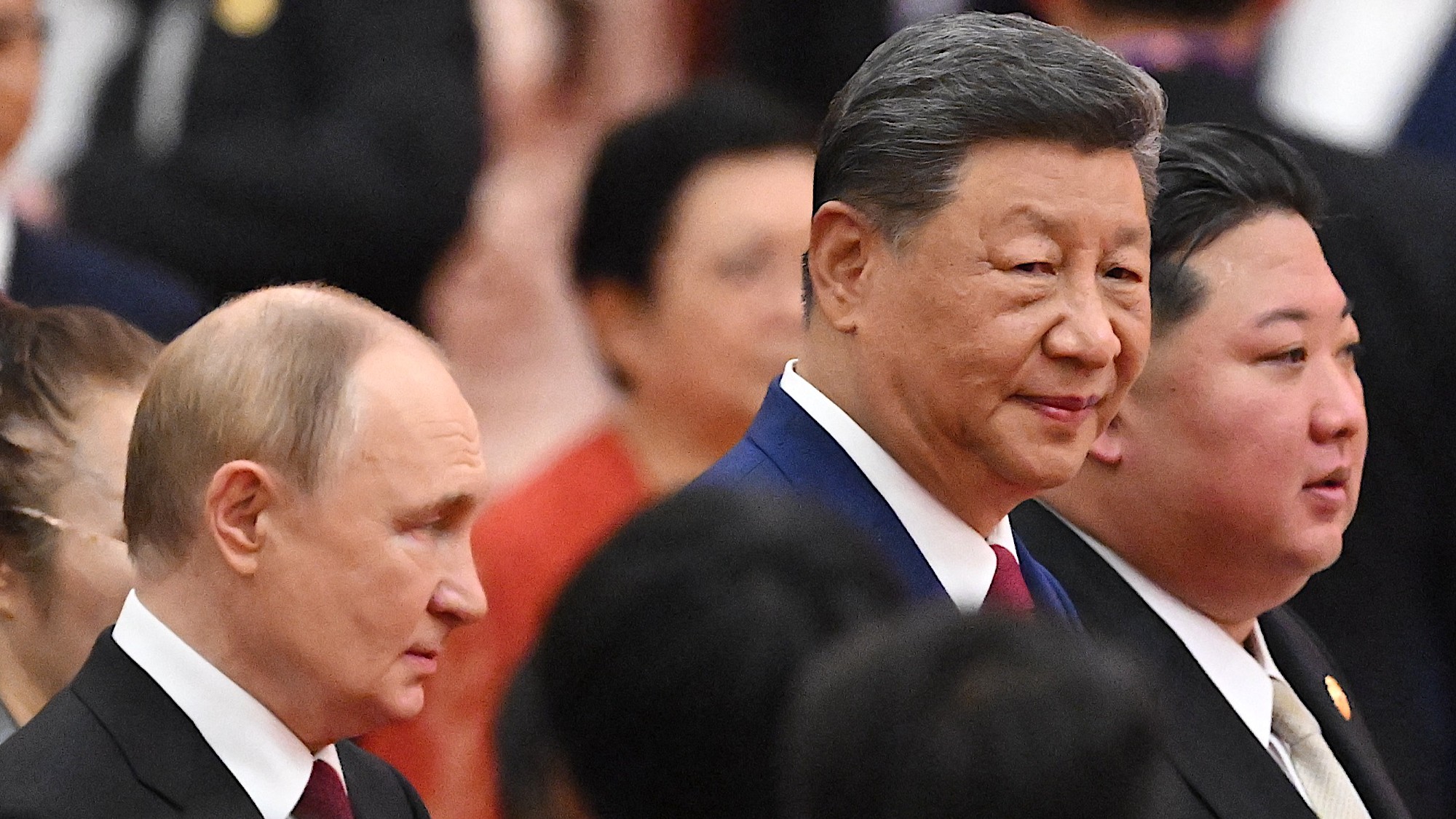How the People’s Republic of China was founded 70 years ago
China flexes military muscles during anniversary celebrations

China is marking 70 years since the founding of the People’s Republic of China.
President Xi Jinping oversaw a huge military parade in Tiananmen Square, featuring 15,000 military personnel, 580 pieces of military equipment and 160 aircraft, says the BBC.
“No force can ever stop the Chinese people and nation from marching forward,” said the president in an opening speech.
The Week
Escape your echo chamber. Get the facts behind the news, plus analysis from multiple perspectives.

Sign up for The Week's Free Newsletters
From our morning news briefing to a weekly Good News Newsletter, get the best of The Week delivered directly to your inbox.
From our morning news briefing to a weekly Good News Newsletter, get the best of The Week delivered directly to your inbox.
The show of military might is being followed by what officials describe as a “happy and lively show”, involving 100,000 performers on floats. A gala performance will come later in the evening.
“The main theme is to tell Chinese stories and express the Chinese people’s confidence in the party and the country,” said Zhang Ge, an official responsible for the event.
But China’s birthday celebrations risk being overshadowed by events in Hong Kong, where anti-government, pro-democracy protests are approaching their fourth month. Thousands of demonstrators are expected to take to the streets to protest against what they say see as China’s control over Hong Kong’s affairs.
Press freedom - already heavily restricted in China - has been even more suppressed, while internet censors are removing online criticism of the ruling Communist Party, president and leading officials.
A free daily email with the biggest news stories of the day – and the best features from TheWeek.com
China is an increasing economic and military power in the world today - but how was the People’s Republic of China founded?
Second Sino-Japanese War
This was fought between China and Japan from July 1937 to the Japanese surrender in September 1945.
It started when China began a full-scale resistance against the influence of Japan in its territory, and can be divided into three significant portions, says Encyclopaedia Brittanica.
The first - a period of Japanese military success and rapid advancement - lasted until the end of 1938. It was followed by a period of relative stalemate until 1944, and was finished by a series of Allied attacks on Japan’s islands following its involvement in the wider Second World War.
Chinese Civil War
Though Japan was defeated at the end of the War, the fighting in China did not stop there. A new conflict was brewing between the Nationalists and the Communists, who had joined together against the Japanese but were themselves bitter rivals.
It had been understood that the two sides would work together until Japan was defeated, but with the conflict over, they turned on each other.
The Nationalists were weakened by the War, military failures and corruption, leaving room for the Communist Party to rapidly gain traction.
Over 1945 and 1946, the US mediated negotiations between the two sides and agreements were reached. But before they could be put into practice, conflict broke out in Manchuria when the withdrawal of Soviet troops sparked a power grab between the two Chinese factions.
Fighting increased and by January 1947 the US had given up on attempts to mediate between the two sides. In March, the Communist Party was charged by the Nationalist government with armed rebellion.
The Communists continued to win important military victories, prompting the future Chairman Mao to declare: “The Chinese people’s revolutionary war has now reached a turning point…The main forces of the People’s Liberation Army have carried the fight into the Kuomintang Area…This is a turning point in history.”
Despite having millions more battle-ready soldiers, the Nationalists’ decline continued - while the Communists had momentum. In 1948, the Communist Party took the last territories in Manchuria, increasing their territory to around a third of China’s land - up from just a tenth in 1946.
The civilian population was tired of war, soaring living costs and hyper-inflation, and support for the ruling Nationalists was nearly completely eroded.
On 1 October 1949, with near complete military control, Chairman Mao proclaimed the establishment of the People’s Republic of China from his capital at Peking.
After the proclamation
Within days of Mao’s proclamation, the Soviet Union recognised it as the official government of China. By the end of the year many other countries had followed suit, says Encyclopedia Britannica.
The remaining Nationalists fled to Taiwan and established a government there, says the BBC.
The Communist Party said 1.5 million soldiers in the People’s Liberation Army were killed or wounded during the Chinese Civil War, along with 600,000 Nationalist troops. Nearly 2 million government troops defected to the Communists over the course of the conflict.
Around 5 million civilians died because of fighting, famine and disease.
-
 Political cartoons for December 7
Political cartoons for December 7Cartoons Sunday’s political cartoons include the Trump-tanic, AI Santa, and the search for a moderate Republican
-
 Trump’s poll collapse: can he stop the slide?
Trump’s poll collapse: can he stop the slide?Talking Point President who promised to ease cost-of-living has found that US economic woes can’t be solved ‘via executive fiat’
-
 Codeword: December 7, 2025
Codeword: December 7, 2025The daily codeword puzzle from The Week
-
 Femicide: Italy’s newest crime
Femicide: Italy’s newest crimeThe Explainer Landmark law to criminalise murder of a woman as an ‘act of hatred’ or ‘subjugation’ but critics say Italy is still deeply patriarchal
-
 Brazil’s Bolsonaro behind bars after appeals run out
Brazil’s Bolsonaro behind bars after appeals run outSpeed Read He will serve 27 years in prison
-
 Americans traveling abroad face renewed criticism in the Trump era
Americans traveling abroad face renewed criticism in the Trump eraThe Explainer Some of Trump’s behavior has Americans being questioned
-
 Nigeria confused by Trump invasion threat
Nigeria confused by Trump invasion threatSpeed Read Trump has claimed the country is persecuting Christians
-
 Sanae Takaichi: Japan’s Iron Lady set to be the country’s first woman prime minister
Sanae Takaichi: Japan’s Iron Lady set to be the country’s first woman prime ministerIn the Spotlight Takaichi is a member of Japan’s conservative, nationalist Liberal Democratic Party
-
 Russia is ‘helping China’ prepare for an invasion of Taiwan
Russia is ‘helping China’ prepare for an invasion of TaiwanIn the Spotlight Russia is reportedly allowing China access to military training
-
 Interpol arrests hundreds in Africa-wide sextortion crackdown
Interpol arrests hundreds in Africa-wide sextortion crackdownIN THE SPOTLIGHT A series of stings disrupts major cybercrime operations as law enforcement estimates millions in losses from schemes designed to prey on lonely users
-
 'Axis of upheaval': will China summit cement new world order?
'Axis of upheaval': will China summit cement new world order?Today's Big Question Xi calls on anti-US alliance to cooperate in new China-led global system – but fault lines remain